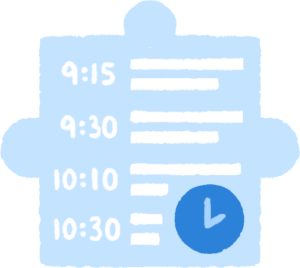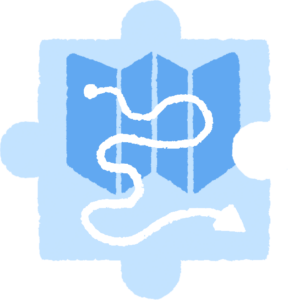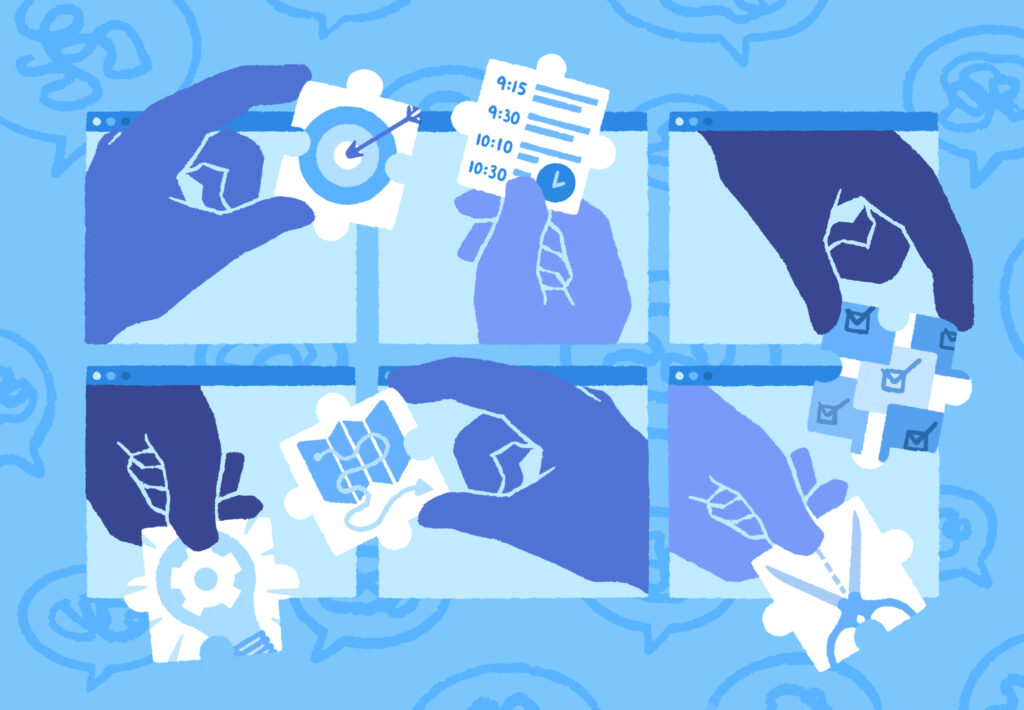Virtual work can be chaotic. Here’s how to collaborate with intention.
Scheduling a virtual session doesn’t equal instant or productive collaboration—it takes much more than a Zoom invite. How many meetings have you sat through, only to reach the end and wonder whether any progress was made? Avoid this by collaborating with intention. Preparation and practice will keep you from going on auto-pilot and intentionality sets a productive tone: our time is valuable.
Know the goal

It’s likely already clear, but be sure to decide on a primary goal for your meeting. Ask yourself, “If nothing else, what do we need to walk away with at the end?” or “What does our audience need to understand and act on?” Keep it simple and achievable. When you try to do too much, you accomplish little. Establishing clear goals helps to keep both yourself and the group focused.
Design your day

With the goal in mind, write an agenda that will get you there. Usually, this is a mix of setup, discovery exercises, ideation, prioritization, breakout groups, and breaks. Run it by key players. Doing so will establish intentionality from the outset. The agenda should be shared before the meeting so expectations are clear to everyone.
Set the table

Prep your virtual space ahead of time with templates, visuals, ideation activities, and exercises. When participants see a prepared space it sends them the signal that you value their time and this won’t be a meandering discussion with no concrete conclusion. They’ll respond in kind. If time is especially tight, send out pre-work with enough time for everyone to finish it before the session (and be sure to be available to answer questions, if they have any).
Cut when needed

Concision beats ambition. Select one or two activities on your agenda that can be scrapped if conversations elsewhere go long, or necessary tangents arise. This is a best practice we use when planning Tremendousness workshops, especially virtual ones. Already knowing which portions you can cut or take care of offline relieves the danger of blindly adhering to the agenda. It actually reinforces the desired intentionality by keeping all eyes on the goal rather than on the clock. It also allows you a little freedom to explore. Hence, our next point.
Explore where necessary

Be open to tangents and organic conversations. It’s a little counter-intuitive, but planning for and effectively following tangents will allow you to explore important topics that may, in fact, stretch beyond your original goals. It’s a fine line—unchecked exploration can derail things while strict intention often crosses into a rigid adherence to the agenda (and both inhibit effective collaboration). Get too far off track and suddenly your meeting is trending toward frantic, rather than fruitful.
Bring it all together

Leave time at the end of your meeting to review what was discussed, confirm the conclusions that were reached, note questions that remain unanswered or should be dealt with later, capture lessons learned for future sessions, and assign the next steps and responsibilities required to keep things moving.
As with any complex production with lots of moving parts, the details matter. Just remember:
- Your time is valuable.
- Their time is valuable.
- Planning and preparation are critical.
- You can’t get anywhere without a defined goal.
- The pace and the experience should be fruitful, not frantic.
- And a smart approach to flexibility is better than dogmatic rigidity.
You may find this shocking, but a well-run virtual/visual session can almost be a respite from everyday work, rather than just another meeting.
Being engaged and actually getting things done is fun.
Image: Illustrations by Alicia Chen / Tremendousness
